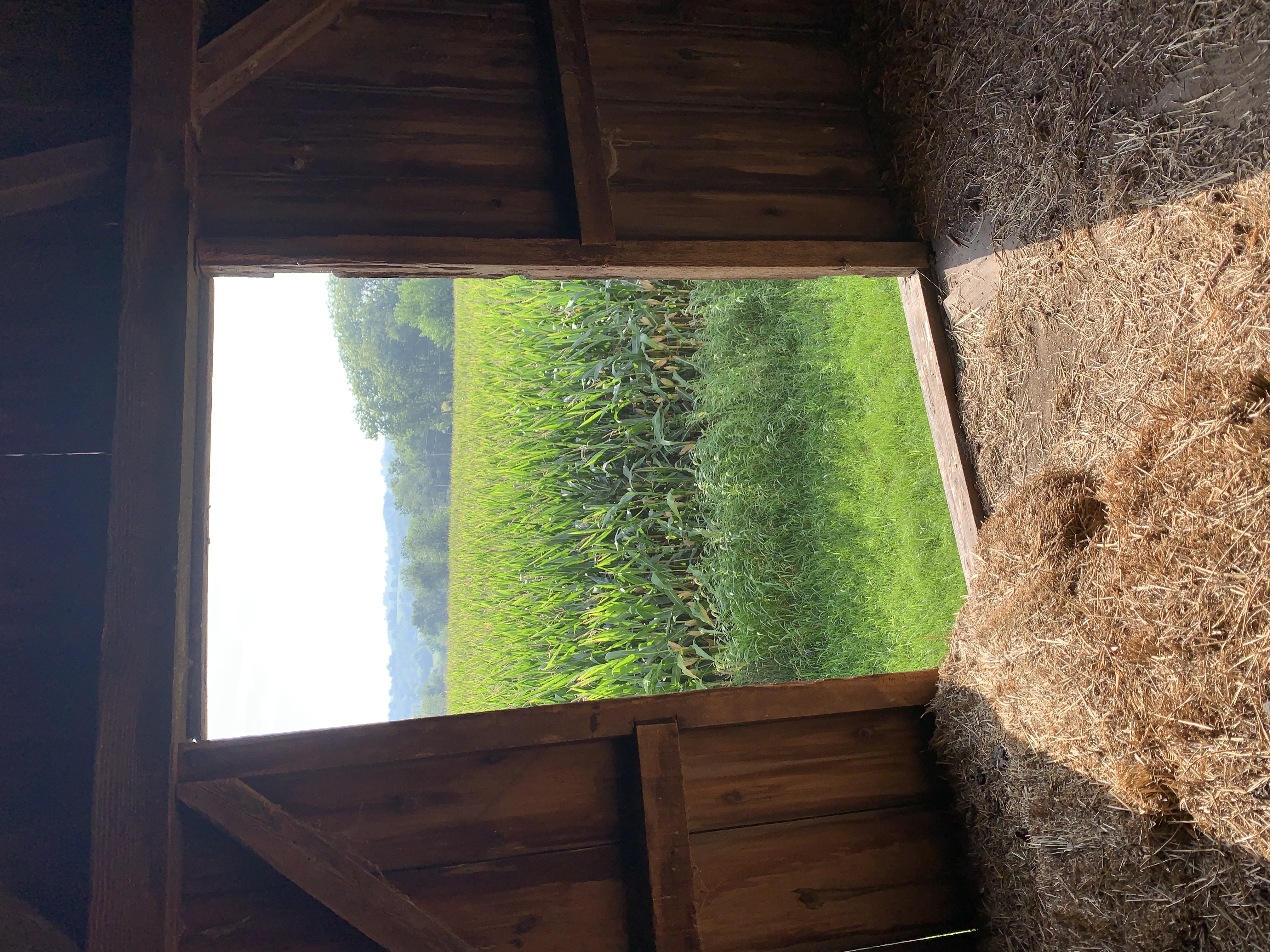The air is full of that sweet, fresh scent of ripening corn. You can almost hear it growing.
It’s been a staple on and around Owl Acres for 170 years. Today the fields across the fence are lush, with ten-foot-tall stalks in neat rows. Broad green leaves ripple in the breeze, sending waves undulating across the field. No weeds are visible. The corn plants cuddle their offspring in layers of protective husks while inside the kernels grow fat and full of starch. The corn silks at the end of each ear are drying now. They have done their job of fertilizing the kernels. Each plant holds one or two ears, and an average acre will produce 200 bushels of corn.
Almost no other plants can compete with today’s corn. A combination of genetic engineering, pesticides and herbicides have vanquished most species, pushing them to the edges. Fertilizer has given the corn all the nutrients it needs, and the rain has been sufficient for this year’s crop. It’s a beautiful thing to see, this monoculture of ours. Today’s corn (Zea mays l.) plays a huge role in Iowa’s economy, providing fuel for automobiles, feed for livestock, corn-based products for grocery shelves. Worldwide, farmers produce over a billion tons of corn each year, and 30 percent of it is grown here.
Corn didn’t always look like this. Over the 170 years it’s grown on Owl Acres, it has become taller and taller, with bigger ears and better kernels. But some 10,000 years before that, indigenous peoples of southern Mexico began cultivating and improving it. It has served as a staple for indigenous people in the Americas ever since.
The origin of corn is under discussion. One theory is based on corn’s genetic ancestor, a wild grass called teosinte. This grass grows wild in southern Mexico and produces 2-3-inch-long ears with one row of five to twelve seeds that are encased in rock-hard coverings. Indigenous people of that region began domesticating and cultivating teosinte, selecting the best kernels from the best plants of the harvest to serve as next year’s seed. Through a careful selection process, people gradually transformed the wild grass into the source of a usable grain. Another theory is that a fortuitous genetic crossing between teosinte and another wild grass called tripsacum or gamagrass, jump-started the evolution of corn. Either way, by 4,000 years ago, as indigenous peoples migrated into Central and South America, they carried corn with them. Corn made up 70% of the diet of the Mayans, and their origin story says that God made them out of a dough that was a mixture of corn and blood.
By the time Europeans came to America, corn as a domesticated agricultural crop and a major staple of the diets of indigenous people was well established from Massachusetts to Argentina. Planting and tending corn allowed nomadic peoples to settle in one place. The “Three Sisters” of corn, beans and squash, were grown together and provided much of their diet.
Iowa’s pioneer farmers began planting corn after the Civil War. They discovered that repeatedly planting wheat wore out the soil quickly, and that Iowa crops could not compete with the ever-expanding wheat fields of Nebraska and Kansas. Corn, on the other hand, grew beautifully in Iowa soil, and rotating fields of corn with fields of hay and later soybeans helped keep the soil in good shape for the corn. In addition, corn made excellent livestock feed. Railroads came to the vicinity of Owl Acres after the Civil War, making it practical to ship products east to Chicago. So the combination of corn and hog farming took hold.
Today Iowa is a leading producer of both corn and hogs in the United States. 57% of Iowa corn goes into ethanol. (That’s fuel for your car, not moonshine.) One bushel of corn yields 2.8 gallons of ethanol and 17 pounds of a high-protein animal feed called dried distillers’ grains. Another 42 percent goes directly into livestock feed according to the Iowa Corn Growers Association, and one percent ends up on the dinner table.
Some of that one percent is the sweet corn we’re going to have for dinner!
Photo by Author. Alt text: Green field of corn and distant valley against a bright morning sky, viewed from the open doorway of the hay mow of the author’s 1915 timber frame barn. A couple of bales of hay lie in the foreground.

1 comment
Love this!!!